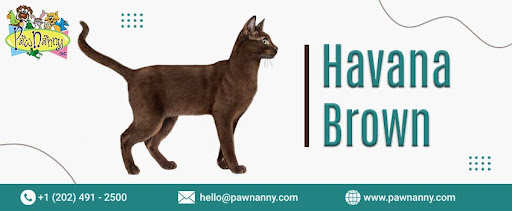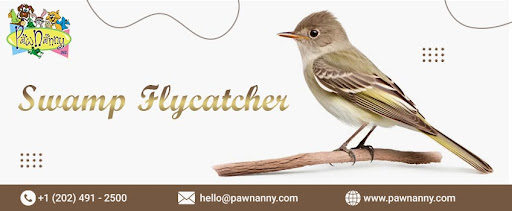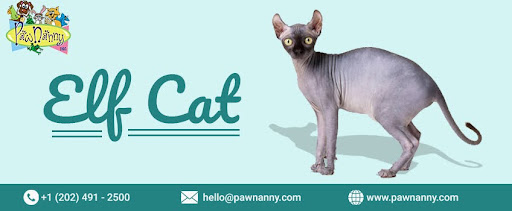
Havana Brown
Size: 12 - 15 inches
Weight: 6 - 12 pounds
Hypoallergenic: No
Lifespan: 10 - 15 years
Behavior
People regard the Havana Brown cat as an affectionate breed that showcases intelligence and playful behavior. Members of this breed need constant human contact because they prefer engaging in daily human activities. Havana Browns show canine resemblances by creating tight attachments to people they get along with, frequently leading them through different areas of the house. Their social disposition and their need for interaction make them ideal house pets that work well with singles and children, in addition to aging adults. Havana Browns do not share the same independent temperament as other cat breeds because they dislike spending long periods isolated from people and develop feelings of loneliness. So make sure to book overnight stays services for pets whenever you are away.
Havana Browns remain active throughout the day, yet they participate actively in mental stimulation-based activities thus making them thrive during dedicated play sessions. Havana Browns show enthusiasm for toys with puzzles and enjoy playing with feather wands and activities that stimulate their investigative instincts. Havana Browns combine their love of playtime with periods of rest, where they choose to sit close to their parents for napping, so book pets overnight stays in your absence. Havana Browns express their friendly and affectionate personality toward other pets, including friendly dogs and cats.
The Havana Brown breed possesses vocal features without excessive chattiness. Their means of communication consists of gentle meowing to their owners, which they use to seek food, playtime, or attention.
History
The Havana Brown represents a cat breed that brings together an intriguing historical story. During the 1950s in England, breeders developed a smooth and aesthetic brown cat, eventually resulting in the Havana Brown breed. Through selective breeding of Siamese cats and Russian Blues alongside domestic black cats, breeders obtained the dark chocolate features that now distinguish the Havana Brown. The Cat Fanciers’ Association (CFA) officially recognized the Havana Brown as a breed in 1958, and cat lovers were soon drawn to its beautiful mahogany coat and emotional green eyes. The heritage of the Havana Brown name stems from Havana cigar coloration.
Throughout the years, this breed has stayed elusive yet committed breeders are collaborating to maintain its characteristic features. Even though the Havana Browns have gone through wavering popularity, the cat community values this breed because of its loving personality and gorgeous physical characteristics. Modern ethical breeding programs sustain the existence of the rare breed while preserving its fundamental health and genetic variety.
In the United States, the Havana Brown cat population remains very low since only small numbers of these cats are registered. The rarity of Havana Browns does not diminish the enthusiasts, who admire their perfect blend of intelligence with elegance and affection. Certain breeders attempt to enlarge the gene pool through carefully controlled outcross methods to protect the breed's genetic well-being and clear traits.
Looks & Health
The Havana Brown possesses an elegant muscular frame of medium dimensions in its body structure. The Havana Brown stands out through its luxurious brown fur with both short and shiny texture, smooth feel, and dark coloration. The distinctiveness of the Havana Brown coat emerges from its unique reddish tone which reinforces its unique beauty trait among other solid-colored feline species. The Havana Brown displays expressive green eyes that pair harmoniously with their dark coat to express intelligent and alert characteristics. The head of Havana Browns demonstrates an unusual structure because their muzzles extend somewhat longer than typical short-haired breed heads. The medium to large-sized ears of Havana Browns feature slightly rounded shapes that naturally extend wide to intensify their observant and investigative characteristics.
Havana Browns typically demonstrate strong health yet inherit some genetic issues that might affect them periodically. Upper respiratory infections affect Havana Brown cats, particularly those with a Siamese heritage. Gingivitis and other dental conditions affect this breed, requiring regular dental care attention. The essential combination of regular veterinarian check-ups, stress-minimized living areas, and proper nutrition will support Havana Brown cats to live healthy lives. Havana Browns develop obesity when fed excess food, and hence, parents must exercise portion control and provide regular exercise activities. The physical activities and mental stimulation of your Havana Brown can be achieved through an entertaining space with ample climbing features and exciting toys. Patrons need to monitor their cats' water intake because Havana Browns demonstrate vulnerabilities to urinary tract medical problems. The health and wellness of Havana Browns depend heavily on constant access to fresh and clean water.
Food & Nutrition
The nutritional requirements for Havana Browns include eating high-quality protein foods that support their muscle development alongside maintaining their health condition. They need animal-based proteins to survive and their diet should include chicken, turkey and fish.
The energy needs of Havana Browns should be met through protein-rich foods because activity demands protein along with omega-3 and omega-6 fatty acids to create a shiny coat and healthy skin. The same water-drinking issues affecting other cat breeds make wet food a perfect solution for hydration in Havana Browns. Pet parents should integrate wet food alongside dry kibble to provide their pets with essential nutrients instead of allowing urinary tract infections caused by dehydration.
The nutritional value of cats depends on the absence of high corn, wheat and soy amounts in their diet since these ingredients lack key nutrients and generate digestive issues. Natural preservatives and artificial coloring should be eliminated from cat diets to support their best health.
Healthy feeding portions coupled with supplements remain vital because excessive feeding of cats leads to obesity, which can trigger secondary health issues. Parents or pets overnight stays who give their pets homemade diets might benefit from incorporating taurine supplements because of their impact on cardiovascular and eye functions. Foods high in fiber give digestive system support to cats while reducing the chance of hair loss.
Conclusion
The Havana Brown features remarkable chocolate-brown fur, green eyes, and friendly personality traits. The ownership of Havana Browns involves vital duties that primarily focus on social development and providing friendship, including overnight stays services for pets when you are away. Havana Browns need frequent contact with humans because they build their happiness through interaction and appreciate active sessions and peaceful times. The characteristics of intelligence and sociability make Havana Browns the optimal pet selection for anyone looking for an affectionate companion. Parents of Havana Brown cats need to fulfill specific duties regarding socialization activities alongside offering companionship.
Havana Browns need frequent human contact. Their short coat requires minimal upkeep, but the owner should still take the cats to regular veterinary appointments for health assessment. Because Havana Browns neither meet the standards of a hypoallergenic breed nor produce abundant shedding, the short fur of these cats can be acceptable for people with allergies. Proper care, a nutritious diet, and ample love will allow Havana Browns to become dedicated companions who live for numerous years. Havana Browns make excellent choices for people who seek a loving pet with a playful nature and graceful appearance. For more information or to avail of our services for pets overnight stays services Fairfax, visit Pawnanny.com!










